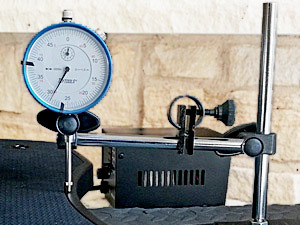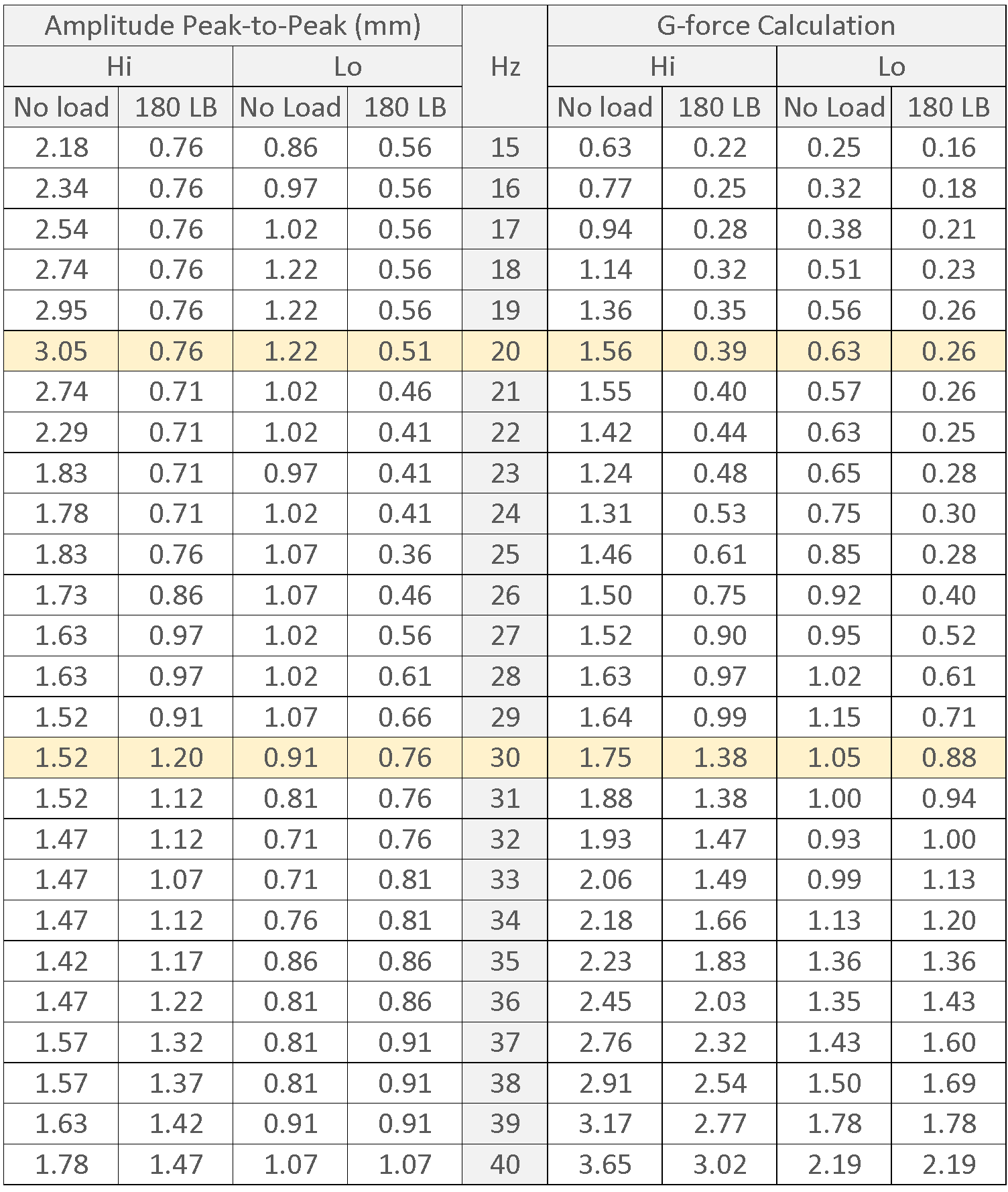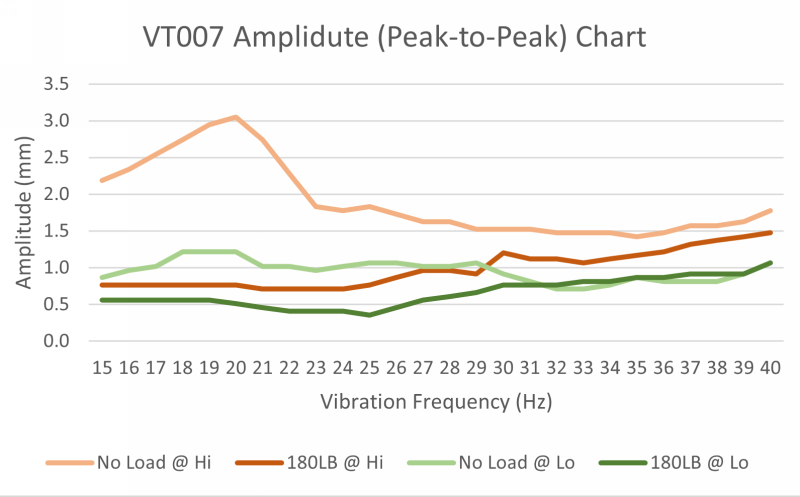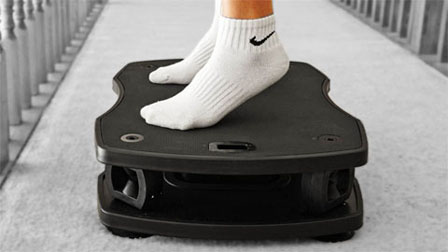VT007 Amplitude & G-force

Two randomly selected VT007 vibration plates are tested to measure their vertical amplitude on the following variables::
- Amplitude settings: Hi and Lo
- Vibration Frequency: 15Hz - 40Hz
- Load (body weight): No load and 180 lb
A dial indicator is used to measure the displacement of the upper platform. Two measurement sports on the platform are selected for each of the two vibration plates. Average amplitude are adopted as the measurement results. Vibration G-force are calculated based on the amplitude measument.
The amplitude discussed and measured in this test is the verticle peak-to-peak amplitude.
Measurement Results & G-force Calculation


Measurment Result Highlights
| Max Amplitude on No Load | 2.6? mm | at 19 Hz |
| Max Amplitude on 180LB | 1.3 mm | at 40 Hz |
| Max G-Force on No Load | 3.3 | at 40 Hz |
| Max G-Force on 180LB | 2.7 | at 40Hz |
Variables Affecting Amplitude
Weight of Eccentric Wheels
For a linear vibration plate, the vibration is generated by the cycling centrifugal force created by the rotation of eccentric wheels. The heavier the eccentric wheels or the higher the rotation speed, the larger the centrifugal force.
Frequency Response
As a forced vibration system, vibration plate has a frequency response pattern, which is the pattern of vibration amplitude in relation to the input vibration frequency. The frequency response pattern is complicated. The highest amplitude happens when the input frequency equals the natural frequency of the object, which is called resonance.
Load (Body Weight)
Linear vibration plate is a flexible link structure. The vibration amplitude yields to the force that presses the sporting springs. The pressing force is from the load - the body weight. The load and the amplitude are in a linear relationship: the larger the load, the lower the amplitude.
VT007's two amplitude settings, Hi and Lo, are achieved by switching the weight of the eccentric wheel. At Hi setting, 3 pair of eccentric wheels are engaged, and at Lo setting, one pair of eccentric wheels are engaged.

